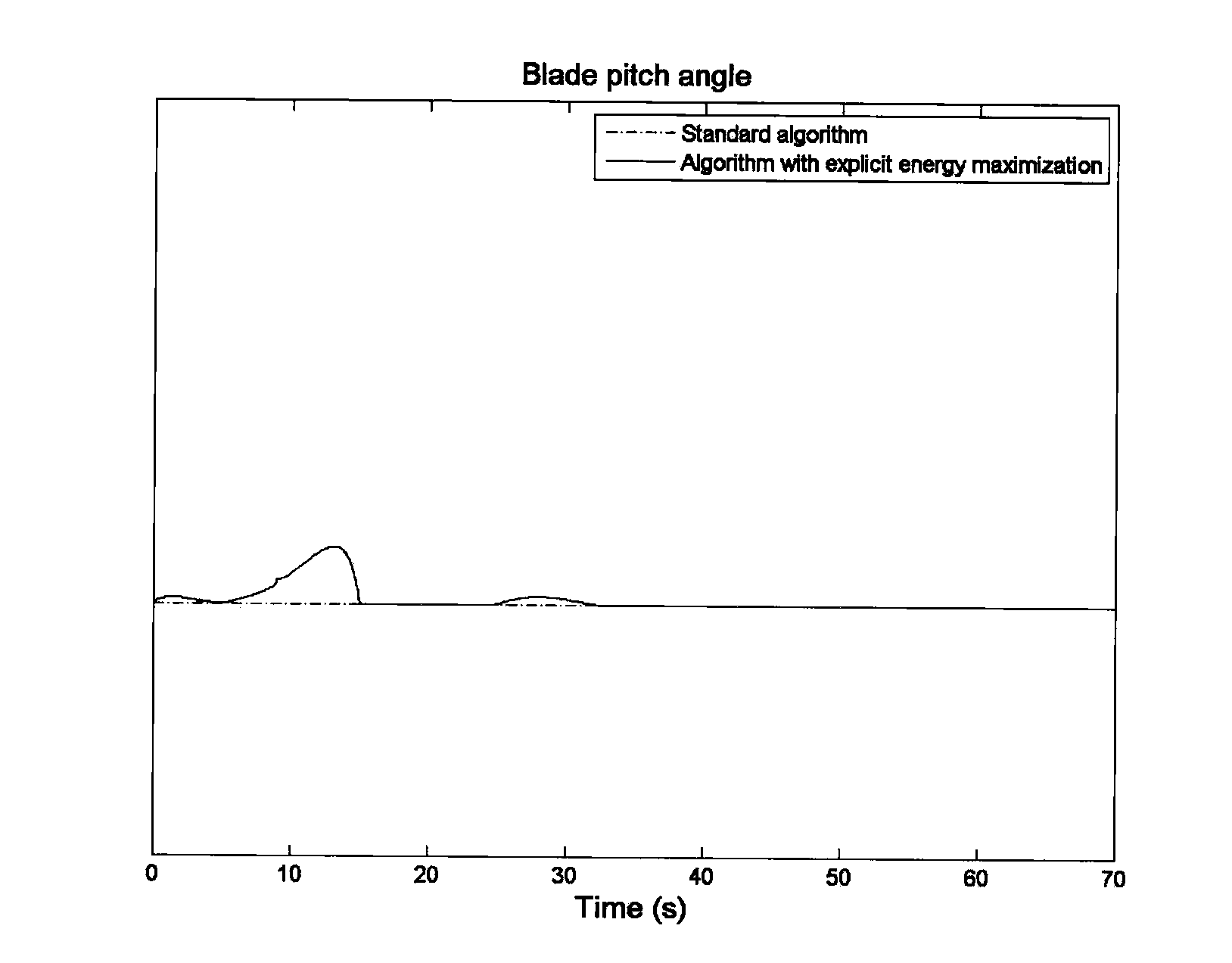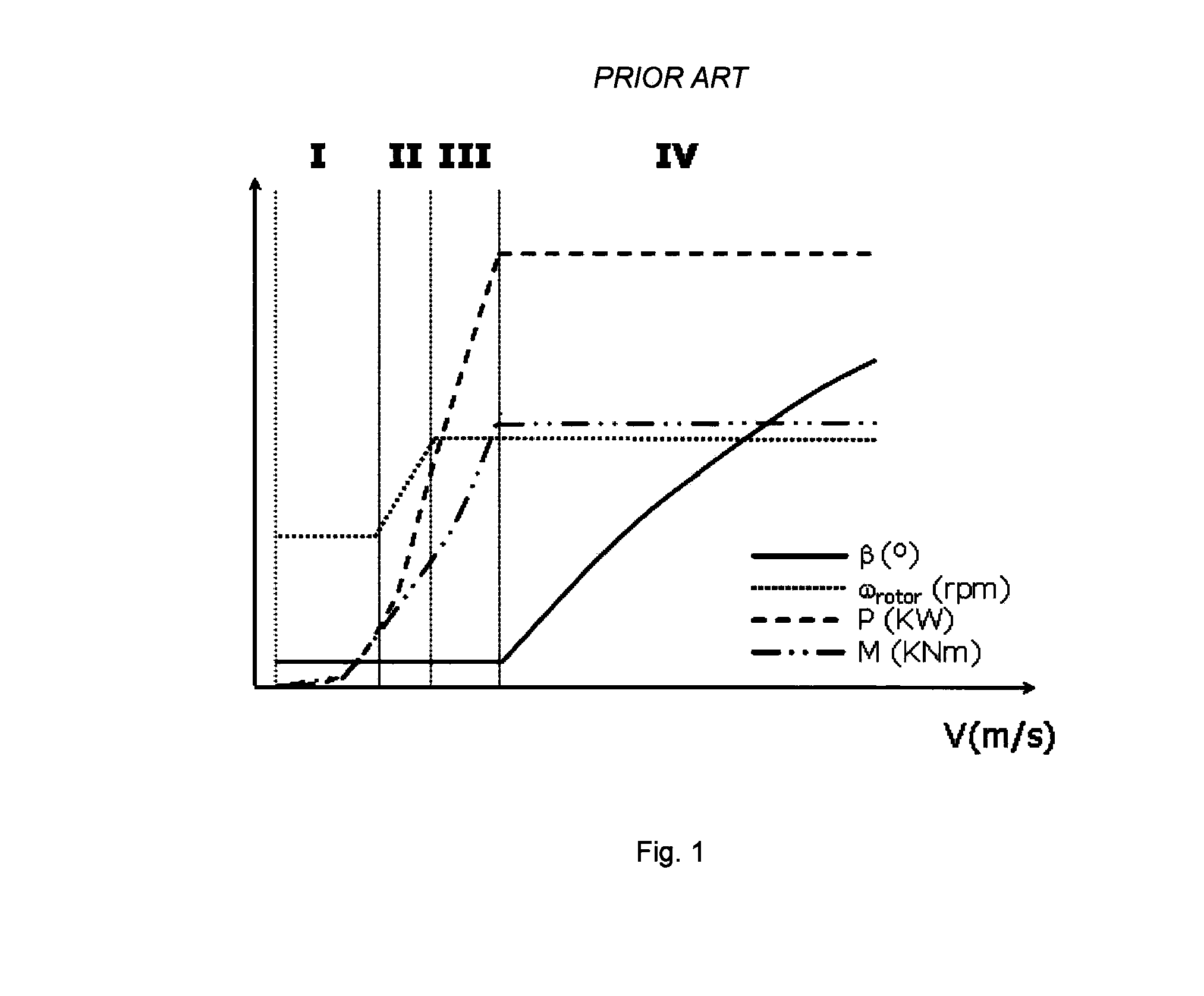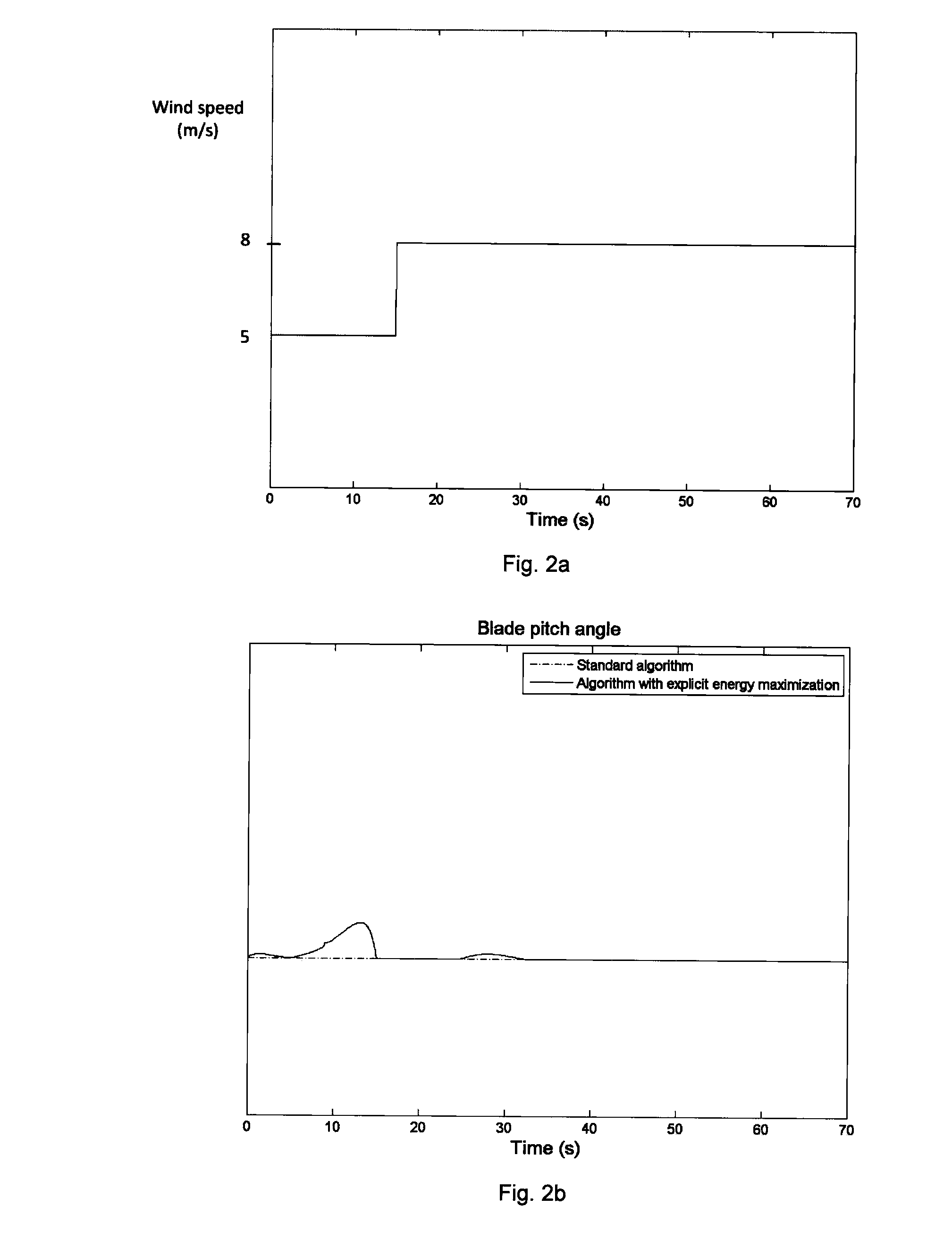Methods of operating a wind turbine, and wind turbines
a technology of wind turbines and wind power generators, applied in the direction of engine control parameters, active/predictive/anticipative control, engine fuction, etc., can solve the problems of wind power generator operation being far from optimal, the transition may thus not be optimal, and the maximum energy generation may be achieved. , to achieve the effect of optimizing the cost function, and avoiding excessive deceleration of the rotor
- Summary
- Abstract
- Description
- Claims
- Application Information
AI Technical Summary
Benefits of technology
Problems solved by technology
Method used
Image
Examples
Embodiment Construction
[0043]The power curve of FIG. 1 has been discussed before.
[0044]FIG. 2a illustrates a wind speed profile in which a relatively sudden change in wind speed from 5 m / s to 8 m / s occurs. FIGS. 2b and 2c illustrate how, the pitch angle and generator torque may be varied in order to maximize energy production both in a “classic” control strategy and in an example of a method according to the present invention. FIGS. 2d and 2e show the resulting generator speed and electrical power production based on the pitch angle and generator torque variation according to FIGS. 2b and 2c, both according to a classic control strategy and the same method according to the present invention. FIGS. 2b-2e are based on a simulation using a commercial aeroelastic code using the wind speed profile according to FIG. 2a as input.
[0045]According to the classic control strategy, a typical quadratic curve which is based on the second operational range as illustrated in FIG. 1 is used. In the example according to th...
PUM
 Login to View More
Login to View More Abstract
Description
Claims
Application Information
 Login to View More
Login to View More - R&D
- Intellectual Property
- Life Sciences
- Materials
- Tech Scout
- Unparalleled Data Quality
- Higher Quality Content
- 60% Fewer Hallucinations
Browse by: Latest US Patents, China's latest patents, Technical Efficacy Thesaurus, Application Domain, Technology Topic, Popular Technical Reports.
© 2025 PatSnap. All rights reserved.Legal|Privacy policy|Modern Slavery Act Transparency Statement|Sitemap|About US| Contact US: help@patsnap.com



